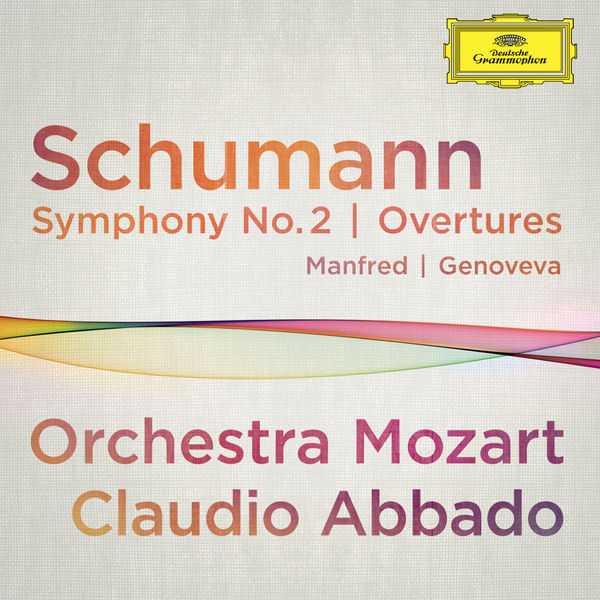
Composer: Robert Schumann
Orchestra: Orchestra Mozart
Conductor: Claudio Abbado
Format: FLAC (tracks)
Label: Deutsche Grammophon
Catalogue: 4791061
Release: 2013
Size: 262 MB
Recovery: +3%
Scan: cover
Symphony No. 2 in C major, Op. 61
01. I. Sostenuto assai – Allegro ma non troppo
02. II. Scherzo. Allegro vivace
03. III. Adagio espresssivo
04. IV. Allegro molto vivace
Manfred, Op. 115
05. Overture
Genoveva
06. Overture
In the year of Abbado’s 80th birthday (26. June), this album celebrates a true legend of the world of classical music.
Claudio Abbado’s interpretation of the Second Symphony is his first recording of a Schumann symphony for DG. The noble “Genoveva” and stirring “Manfred” overtures are exalted additions to this album.
About his Second as performed at the Lucerne Easter Festival, the Neue Zürcher Zeitung extolled Abbado’s reading as of “the purest beauty”, while Berlin’s Der Tagesspiegel found Abbado’s way with the symphony “liberating”.
Claudio Abbado’s live album of Robert Schumann’s music with the Orchestra Mozart is a curious diversion from the ensemble’s ongoing series of Mozart recordings, though it shows a willingness to explore other repertoire that is less predictable for them. At first blush, the Symphony No. 2 in C major and the overtures Manfred and Genoveva might seem well-suited to the group’s warm tone and rich blend, though the combination of their tonal coloration with Schumann’s thick orchestration tends to make textures rather heavy and homogenous sounding. There are, of course, ways to adjust orchestral sections through subtle changes in the dynamics and to make some of Schumann’s notorious doublings of woodwinds and strings less egregious, but Abbado seems to have kept strictly to the scores and ignored these issues. As a result, this is pretty much ordinary, unreconstructed Schumann, and there is no attempt to clarify inner lines or to make the Second Symphony lighter, clearer, or leaner, as it might sound in the hands of some period ensembles. The recording certainly could have helped alleviate this thickness to an extent, though the fairly flat sound suggests a limited number of microphones and minimal mixing. Furthermore, the responsive acoustics of the Vienna Musikverein tend to blur timbres instead of making them distinct. Despite the problems of sound quality, the symphony and the overtures are renderd with plenty of emotion and the musicians display commitment and vigor in their playing, so Schumann’s music still communicates at a high level of expressiveness.



